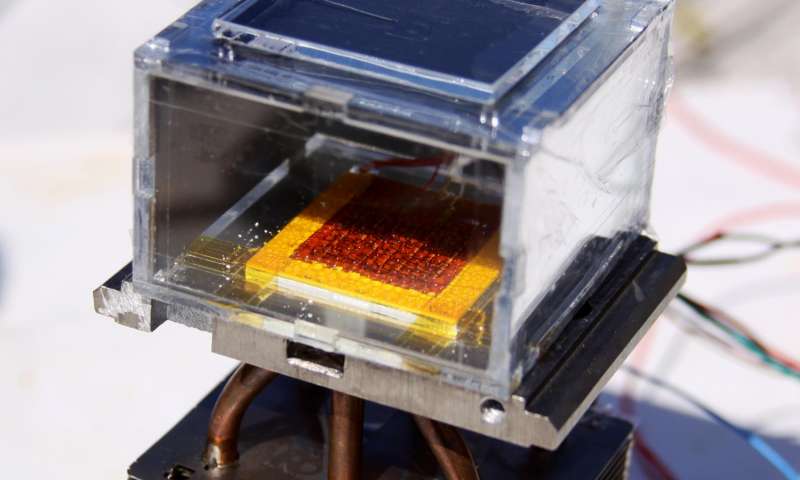By Nicole DiGiose
As the human population grows and the climate heats up, water shortages, which are already affecting regions around the world, are expected to get much worse. Fortunately, scientists at MIT and the University of California at Berkeley have developed a technology that could provide an easy way of obtaining fresh water almost anywhere on Earth. Their secret weapon? A little solar-powered device that extracts water directly from the moisture in the air.

The tissue-box-sized device can produce 2.8 liters of water in 12 hours. Image source: MIT.
Using only the power of the sun and a special material with some extraordinary properties, the tissue-box-sized device, according to the journal Science, can produce 2.8 liters of water in 12 hours. One of the most impressive qualities about it is that it can pull water vapor out of the air in conditions where humidity is as low as 20%.
The special material that the device relies on is made by combining zirconium and adipic acid into what’s known as a metal-organic framework. During the night, the material collects water molecules from the air, and during the day, sunlight causes it to release the water into a condenser.
Although still a prototype, the early results of the device appear quite promising. One known challenge, however, is the fact that the cost of the necessary zirconium material is high. Luckily, according to the researchers, they’ve had success using cheaper aluminum, too.
Chemist Omar Yaghi, who, in collaboration with mechanical engineer, Evelyn Wang, created the device, said that the device would allow for taking water supplies “off-grid.” This invites a comparison to the global spread of cell phones, which, by circumventing the need to lay expensive wires, proved more accessible in developing nations than wired phones. The spread of the technology had profound effects on global agriculture, education, and governance.
Of course, the impact of a device that’s capable of producing drinkable water without the need for expensive pipes, filtration facilities, or power could be even bigger. According to the World Health Organization, one in 10 people across the globe lack access to clean water, and 88% of disease in the developing world has been estimated to be caused by unsafe drinking water.
But issues of clean water access aren’t limited to developing countries. In the United States, safe water has been an issue because of lead contamination in Flint, Michigan, and there are concerns over California’s droughts.
The success of the prototype has the research team hopeful that commercial use may be in the near future.
“My vision is really to bring water to households off-grid,” Yaghi told The Washington Post. “I don’t think we’re very far from it because of the fact that this device works.”
Advertisement
Learn more about Electronic Products Magazine





